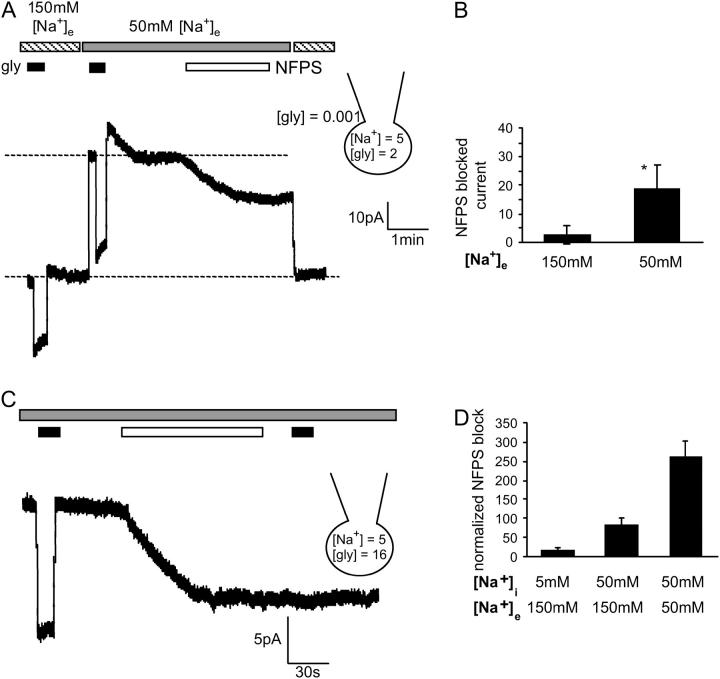FIGURE 6.
Elevating [glycine]i stimulates an outward current that can be blocked with NFPS. (A) When the glycine and [Na+]i gradients are set as described on the figure, glycine (300 μM, black bar) stimulates an inward current in 150 mM [Na+]e (striped bar) and 50 mM [Na+]e (gray bar). NFPS (1 μM, open bar) blocks a current in 50 mM [Na+]e, but does not block a current in 150 mM [Na+]e (compare the baseline current at 150 mM [Na+]e before NFPS application and then after switching from 50 mM [Na+]e to 150 mM [Na+]e as NFPS inhibition of GLYT1b persists after washout of free drug (see Fig. 2 B)). (B) Bar graph comparing the amplitude of the NFPS blocked currents in 150 mM and 50 mM [Na+]e. (n = 4, paired Student's t-test). (C) When [glycine]i is 16 mM, NFPS (1 μM, open bar) blocks a sustained outward current. (D) The amplitude of the NFPS blocked current was enhanced by elevating [Na+]i and lowering [Na+]e (n ≥ 4).

